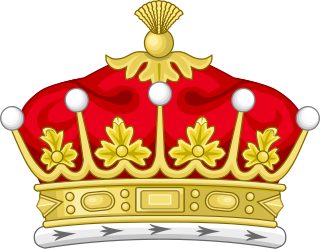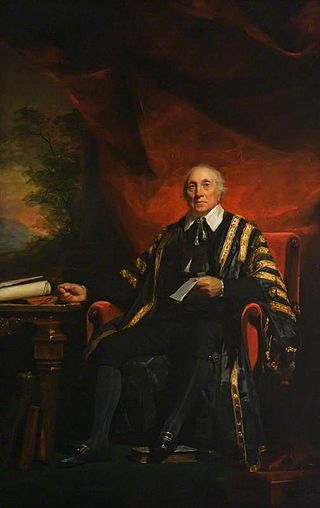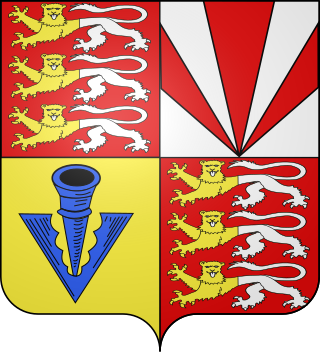Related Research Articles

Earl of Strathmore and Kinghorne is a title in the Peerage of Scotland and the Peerage of the United Kingdom. The earl is also Chief of Clan Lyon.

Lord Frederick Campbell was a Scottish nobleman and politician. He was Lord Clerk Register of Scotland, 1768–1816; Member of Parliament (MP) for Glasgow Burghs (1761–1780) and for Argyllshire (1780–1799).
Thomas Lyon, 8th Earl of Strathmore was a Scottish nobleman, and Tory politician who sat in the House of Commons from 1734 to 1735, when he resigned upon succeeding to the peerage as Earl of Strathmore.
Dysart Burghs was a district of burghs constituency of the House of Commons of Great Britain from 1708 to 1801 and of the House of Commons of the United Kingdom from 1801 to 1832. It elected one Member of Parliament (MP).
Wigtown Burghs, also known as Wigton Burghs and Wigtown District of Burghs, was a constituency of the House of Commons of the Parliament of Great Britain from 1708 to 1800 and of the House of Commons of the Parliament of the United Kingdom from 1801 to 1885. It was represented by one Member of Parliament (MP).

John Bowes, 9th Earl of Strathmore and Kinghorne, born John Lyon, was a Scottish nobleman and peer. He was the 9th Earl of Strathmore and Kinghorne and one of the maternal ancestors of King Charles III.
John Maule, of Inverkeilor, Forfarshire, was a Scottish Whig politician who sat in the British House of Commons from 1739 to 1748.

Rear Admiral Sir John Lindsay was a British naval officer of the 18th century, who achieved the rank of admiral late in his career. Joining the Navy during the Seven Years' War, he served off France, followed by service for several years as captain of a warship stationed in the West Indies. After war's end, he returned to Britain, serving as an MP for Aberdeen Burghs from 1767 to 1768. From August 1769 to March 1772 Lindsay was promoted to commodore and assigned as commander-in-chief of the East Indies Station. He resigned from the Navy for a period following the Battle of Ushant (1778) off the coast of France, during the American War of Independence. In 1784 he was assigned as commodore and commander-in-chief in the Mediterranean. In the last year of his life, he was promoted to rear admiral as an honorary position, as his failing health prevented him from taking a command.
Thomas or Tom Lyon may refer to:

Percy Wyndham-O'Brien, 1st Earl of Thomond was a British Member of Parliament and an Irish peer.

George Harry Grey, 5th Earl of Stamford, styled Lord Grey from 1739 to 1768, was a British nobleman, who additionally became a peer of Great Britain as Earl of Warrington in 1796.

George Brodrick, 4th Viscount Midleton was a British politician who sat in the House of Commons from 1774 to 1796, when he was raised to the peerage of Great Britain as Baron Brodrick.
William de Burgh was a prominent Anglo-Irish politician and theological writer who was a Member of Parliament for Athy (1769–76), a supporter of William Wilberforce, and an active campaigner for the abolition of slavery.
Hon. Edward Bouverie was a British politician who sat in the House of Commons between 1761 and 1810.
Robert Vyner (1717–1799), was a British politician who sat in the House of Commons at various times between 1754 and 1796.
Henry Penton (1736–1812) was a British politician who sat in the House of Commons for 35 years from 1761 to 1796. As the developer of his estate in North London, he became the founder of Pentonville.
Sir Alexander Charles George Leith, 1st Baronet (1741–1780) was a British soldier and politician who sat in the House of Commons between 1774 and 1780.
Thomas Leslie, of Stenton, Fife, was a British Army officer and Scottish politician who sat in the House of Commons between 1734 and 1761.
George Barrington, 5th Viscount Barrington, was a British minister and aristocrat.
References
- 1 2 "Lyon, Thomas (LN758T)". A Cambridge Alumni Database. University of Cambridge.
- 1 2 3 "LYON, Hon. Thomas (1741-96), of Hallgreen, Kincardine and Pitpointy, Forfar". History of Parliament Online. Retrieved 20 August 2017.
- ↑ Engineering Timelines Hetton Colliery Railway